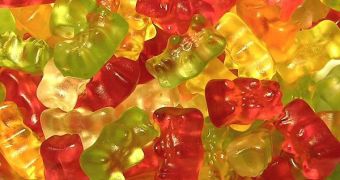Scientists using functional Magnetic Resonance Imaging (fMRI) on the human brain have determined that the human brain is perfectly capable of differentiating between artificial sweeteners and sugar. This also holds true when the conscious mind is unaware of the difference. Over the past few years, manufacturers have become so capable of mimicking the taste of real sugar, that our taste buds can no longer tell the difference. But our brains can, researchers at the University of Colorado in Denver say. Moreover, they also appear to be reacting differently, NewScientist reports.
The findings may have considerable implications, the team says, especially in terms of diets. It may be that artificial sweeteners in fact promote eating more, by stimulating the appetite without actually satisfying it. UCD psychiatrist Guido Frank has been the leader of the new investigation, which has been conducted on 12 women. They have been given sweet treats, half of which were sweetened with artificial sweeteners, while the other half with natural sugar. The two types of substances were mixed in such a way that the study participants could not tell the difference. However, their fMRI scans have shown that their brains have subconsciously reacted differently to the two types of sweet stuff.
Sucrose, the real sugar, has triggered a very strong activation response in the areas of the human brain associated with the feeling of “reward.” The same centers are triggered after we eat or drink, and they make us feel full and satiated. In the case of women who were given sucralose, the artificial replacement for sucrose, the reward centers were activated to a lesser degree. Instead, Frank says, a large activation pattern was recorded in taste-associated brain areas. The substitute triggered these reactions to a much higher degree than sucrose did.
According to the UCD team, artificial sweeteners and sugar replacements may actually be activating areas of the brain associated with pleasant taste. These activated regions indeed register the pleasure that we experience when eating the sweet stuff, but they do not cause satiation. This means that people who consume a great deal of artificial sweeteners may actually be at increased risk of wanting to eat again later on in the day. “That might drive you to eat something sweet or something calorific later on,” Frank concludes.

 14 DAY TRIAL //
14 DAY TRIAL //